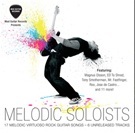3 Reasons Your Lyrics Might Suck
 For a large number of songwriters, lyric-writing is the hardest aspect of the art. The main reason it’s such a struggle is that lyric writing is a completely different skill to writing music, and skill in musical theory and composition is of little to no help in lyric writing, which places entirely different demands on a songwriter.
For a large number of songwriters, lyric-writing is the hardest aspect of the art. The main reason it’s such a struggle is that lyric writing is a completely different skill to writing music, and skill in musical theory and composition is of little to no help in lyric writing, which places entirely different demands on a songwriter.
As well as working on my own material, I do a great deal of work with songwriters who are struggling with their lyrics, particularly writers for whom English is not their native language. These are the most common errors that I find when helping songwriters, and what can be done to fix them.
1 – Writing the lyrics before the music
Many songwriters decide to write a song about a certain subject, write some lyrics about that subject, and then write the music. In my experience, this is the #1 cause of bad lyrics. Fitting music to words is extremely difficult. Even if the lyrics in themselves make great poetry, the rhythm and melody of music can do all sorts of ugly things to the emphasis and delivery of the words that can ruin them. Not all poetry makes good lyrics, and not all good lyrics make good poetry (the works of Wordsworth and Keats are somewhat lacking in phrases as “Da Doo Ron Ron” or “Woah-oah-oah-oah sweet child o’mine”).
The most effective process in my experience is to first decide on a subject, but then think about the emotions that that subject elicits. Does the subject make you feel angry, sad, happy, romantic, or a mixture of things? Then use those musical skills of yours to write some MUSIC that conveys that emotion or emotions. Only then think about lyrics. As by this point you will have a very strong understanding of the emotional emphasis and structure of the song, the lyrics will flow much more easily. It’s also much easier to change a word here or there, add one, subtract one, or mangle the grammar in some way to make the flow and rhythm of the lyrics fit the melody than it is to start altering a melody to work with pre-existing words. There’s only 12 musical notes, but there are nearly a million words in the unabridged Oxford English Dictionary. Work with the bigger toolbox, not the smaller one.
2 – Not paying enough attention to the song structure
Whilst most good songwriters know the difference between a verse, bridge, chorus, midsection and the like in musical terms, they will often not pay enough attention to the structure when writing the lyrics. The most common (but not the only) symptom of this problem is that the entire song ends up with chorus-style lyrics and is, as a friend of mine put it, “just a series of slogans”.
Think about the relationship between the different elements of a song structure. If you’re not using a conventional structure, then think about the musical progression and the change of moods throughout the piece.
I know that it’s a bit odd to use a Bon Jovi song to illustrate good lyric writing (the guy’s not exactly Shakespeare), but take a look at the words to “Living on a Prayer”. This song, like all his songs, is all about the big chorus, but the big chorus only works because he has put it in context both musically and lyrically. The song is about two people using the power of their love to get through their troubles. The verses discuss what those problems are and why the couple are down on their luck, the bridges show the couple talking to each other, and then the chorus is “a series of slogans” giving a more emotional expression to the theme of the song. The point is that those slogans only make sense when they have been put in context by the rest of the song. If the song started with the chorus lyrics, it would be confusing and nonsensical. Who are these people that are “halfway there”? Halfway where? Make it through what? It’s only such an effective lyrical hook (and it’s a VERY effective hook, I bet you have it in your head right now even if you really, really hate Bon Jovi) because it’s been put into context by the rest of the song structure.
Verses need to discuss the “what” of a song. Bridges, if you have them, should discuss the “why should I care about that” aspect and choruses should be the full expression of emotion. A midsection could be a “plot twist”, adding some extra context that makes the choruses after it seem different in the light of the new thing you have told the listener – some songs will make a key change here to emphasise that the final chorus, or choruses, are the same, but have a different meaning now. If your 20 minute prog epic doesn’t have that structure, it still needs to go on that storytelling journey to make sense to the listener.
3 – Not enough detachment from the subject matter
This is quite a complex concept, but a very important one. A common feature in almost all substandard lyrics is that they are written in a matter-of-fact style. They either talk about the events or subject of the song (“Direct” lyrics), or they discuss what has happened and how it makes them feel (“First-level” lyrics). However, the best lyrics, especially in the rock and metal genres, go to the “second level” of detachment, wherein the subject matter of the song is erased entirely from the lyrics, and all that is discussed is the images and feelings the events or subject are evoking.
To make that clearer, let’s say you were to write about your dog dying. “Direct” lyrics would be something like:
“Fido’s dead, he ran out of luck, he ran in the road and got hit by a truck.”
It sounds like something an eight-year-old would write. It’s also dull, there’s nothing to make me care about this dude’s dog and what happened to it. Let’s go to the first level and add the emotional reaction:
“I can no longer sleep, I can no longer eat, since that fateful day with my dog in the street.”
Better, but it’s coming across as whiny. As the listener I still don’t really care. This dude’s dog got run over and he is sad. Sucks to be him I guess, but what does it have to do with me? Let’s go to the second level, and strip out the story entirely, leaving only emotions and images:
“Just a tear in the eye and the stains on the clothes, where the tyres and the asphalt brought love to a close.”
Now that’s better. But why is it better? There are two reasons for this.
The first is that in the first two examples, we are seeing a story happening to someone else. We see the guy, and his dog, and the sticky end it came to. But now there is no mention of the guy or the dog. Our brains don’t like a story without characters, so they default to applying the story to US. Now the listener is forced to imagine those things happening TO THEM, and is experiencing the emotions by imagining the story themselves rather than just being told it.
The second reason that it’s more effective is that it’s vaguer. The first two examples will only have any emotional resonance for someone whose dog was run over. However, by taking out the specifics, that could apply to anyone who has ever lost a pet, or a person, to a road accident. Even if they haven’t, the vagueness of the lyrics lets them apply their imaginations to the feeling of losing a loved one on the road. They’ll apply it to their dog, their cat, their lover, their parents, their children, and feel the grief of the song about someone they love, rather than a dog belonging to some guy they neither know nor care about.
That’s a lightning-fast introduction to a very deep and complex subject. If you want to know more, I’ve written more about lyrical detachment on my website.
About the author: James Scott is a London music producer, writer and audio engineer and the author of Writing Effective Lyrics in Rock and Metal.










